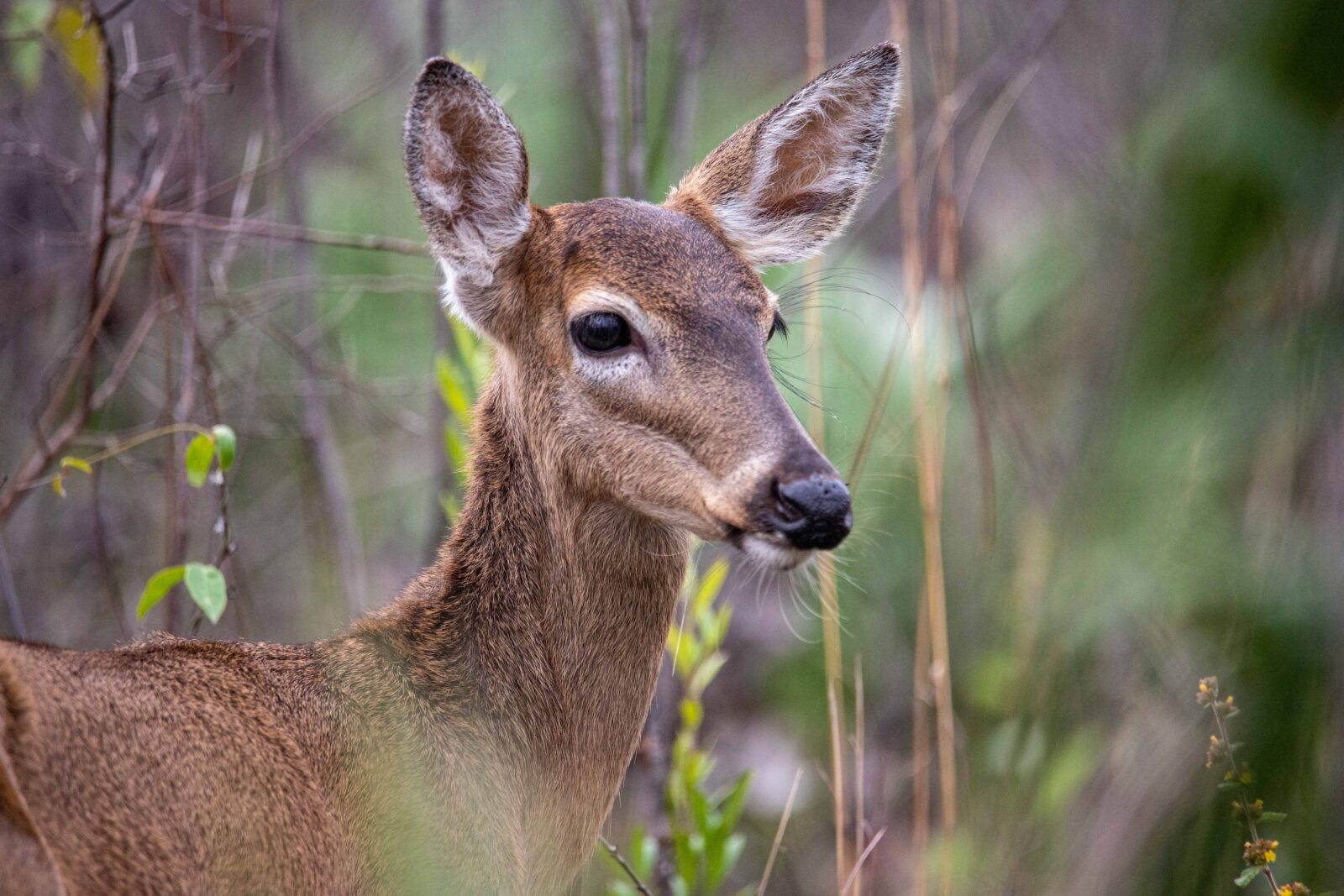Keep Learning
How to build a deer fence with fishing line

Deer Fence DIY
Anyone who has an orchard or garden knows how frustrating it is to work day in and day out only to find that deer have eaten your lettuce, trampled your tomatoes, pulled up turnips and carrots, ruined your flower beds, ripped the leaves off your young apple trees, or eaten the fruits right off the trees.
And anyone who has put up deer fencing knows how expensive that can be. Creating a 10-foot wire deer fence is just not practical for many people, so here’s how to build a cheap but effective deer fence.
Materials
- Fence posts, T-posts, or other types of stakes
- Clear 30-pound monofilament fishing line
- 4- to 6-inch diameter PVC pipe
Instructions
Creating the fence
- Place the fence posts at 15-20 foot intervals around the perimeter of your orchard, garden, or flower beds.
- Tie the 30-pound monofilament fishing line around your first fence post at 12-18 inches up from the ground.
- Go to your next post and pull the line fairly tight but not so tight that it has no give. Wrap the line around the post three or four times and continue on to your next post until you have gone around the whole perimeter of the area you’re fencing.
- Go up another 12-18 inches with another strand and repeat the process. Continue this until you get to the top of the post.
The higher the fence, the better results you will have.
Creating the gate
- When you get to the end where your gate would be and where the first post you started from is located, take a 4-6 inch diameter PVC pipe or whatever diameter you would need for your post to fit into.
- Cut the PVC pipe 12-18 inches.
- Dig a hole 2-3 inches from the first post that’s in the ground.
- Put the PVC pipe into the ground and leave around an inch sticking up above the soil line. Leaving an inch of the PVC pipe sticking above the soil line prevents soil from falling back into the pipe.
- Remove the soil that’s in the PVC pipe and put your final post into the pipe.
This final post will act as the gate. Put the final post either in or out of the pipe when you need to close or open the gate.
To hold the top two posts together, just take some type of “O” ring that would fit over the two posts or use some type of latch to hold them in place.
How it works
Once your fencing is done and a deer comes around in the daytime or the middle of the night, the deer cannot see the clear 30-pound test line. When they brush up against it, they can feel it and know the something is there, yet they can’t see it. The deer has no idea how high it needs to jump to get over the obstacle it has just walked into and they will stay away from the area.
It’s important to use only 30-pound test line. Anything lower than that and the deer have a tendency to break the line when they brush up or lean against it. Anything over 30-pound line, they can see. This is also why you don’t want to use any colored or braided line; it’s easier for the deer to see it.
Another very important tip: Do not put any warning flags or signs on the line. This will only tell the deer how high they would need to jump to get over the fence.
When you’re done, the fence should look as though there are posts with nothing between them. You should hardly be able to see the line tied to the posts, if at all.
This article was originally published on the Seed Savers Exchange blog on March 15, 2016.